Sealed vs Open Gas Burners
What's the difference between sealed gas burners and open burners and what are the pros and cons of each? Which do you prefer?
Looking forward to hearing your responses...
RoseWest
Comments (42)
zartemis
12 years agoThere are a number of threads discussing this, but I'll add yet another voice (esp since I have hands on experience with both and yet have not drunk enough koolaid to believe that open burners are really ALL THAT).
A sealed burner stove is designed so that liquids and other spills won't go into the interior of the stove. Like this:
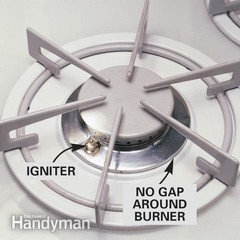
This means that the gas jets are usually protected from the top, so the gas shoots out sideways a bit.
An open burner has crevices that allow spills into the stove area, but this means the gas jets can shoot more upwards.
Like this:
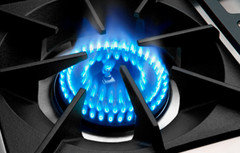
The open burner is a little more efficient than a closed burner, but to clean it you have to remove parts of the stove (usually heavy iron). The efficiency means that for the same BTU, more of the pot will be heated and less of the perimeter and kitchen air (because the jets go up rather than to the side first). Depending on the design of the stove, there may be slightly more even heating with open burners, but we used to have a sealed burner thermador and I was unable to see any uneaveness in heating from their star burner in our heavy duty, quality, pots and pans.
Personally, I think it's a small incremental difference between open burners and good sealed burners. If efficiency is really, really important to you, so much that that incremental difference is a major factor then one should be considering induction, since the jump in efficiency is greater from gas to induction than from sealed burner gas to open burner gas.
Another difference currently is that the top end (highest BTU) of open burners tends to be higher than sealed. This will mean you can boil water faster. But again, the best induction will outperform open burner gas.
I have a Capital Culinarian and while I am happy with it and think it is an incremental improvement over the Thermador we had, I don't think it's that big a deal. And if I don't think the difference between Thermador and Capital is all that great, you can imagine how trivial I consider the difference between Capital and other open burner stoves are.
Related Professionals
Corcoran Kitchen & Bathroom Designers · Bonita Kitchen & Bathroom Designers · Normal Kitchen & Bathroom Remodelers · Centerville Kitchen & Bathroom Remodelers · Creve Coeur Kitchen & Bathroom Remodelers · North Arlington Kitchen & Bathroom Remodelers · Oceanside Kitchen & Bathroom Remodelers · Port Arthur Kitchen & Bathroom Remodelers · Rancho Palos Verdes Kitchen & Bathroom Remodelers · Graham Cabinets & Cabinetry · Lockport Cabinets & Cabinetry · Norfolk Cabinets & Cabinetry · North Massapequa Cabinets & Cabinetry · Palos Verdes Estates Cabinets & Cabinetry · Sunrise Manor Cabinets & Cabinetrycooksnsews
12 years agoI have owned, cooked on, and cleaned a sealed burner DCS range for over three years. After watching the cleaning videos posted via the "Stooxie - Wanna Make A Video??" thread, I will categorically proclaim that cleaning my DCS is absolutely trivial compared to the disassembly required to clean either the Bluestar, or Capital Culinarian cooktops, which seem to be the preferred open burner brands here on GW. For folks for whom cleanup ease is a consideration, sealed burners make much sense.
Another advantage of the DSC (can't speak to other sealed burner brands) is their simmer capabilities. I have 4 x 17.5K BTU and 2 x 13.5K BTU burners, and all can steam rice, or hold mashed potatoes hot for hours without scorching. Open burner ranges require the use of a "simmer plate", or else have a low BTU dedicated simmer burner. For my style of home cooking, this simmer feature is a valuable convenience.
Of course, if you've "drunk the KoolAid", anyone who chooses a range because of easy clean-up or simmer capability is obviously a poser and/or a culinary wuss, certainly not qualified to express an opinion here about cooking... But some of us don't notice any discernable negative impact of our flame pattern. In my case, the pots and pans I use have thick heavy bottoms and I've never noticed the edges heating differentially to the centres.
weissman
12 years agoI heartily second everything cooksnews says. I've owned a DCS for nearly 10 years and find it incredibly easy to clean compared to the previous open burner range that I had. I also love the low simmer on all the burners and find the high heat more than adequate for my needs and I stir fry a lot. I think Bluestar and CC are good products but they aren't the only acceptable ranges for cooking. I end up using the simmer a good bit more than the I do full blast heat. I've cooked on a professional Garland and I agree with zartemis that good open burners are only incrementatlly better than good sealed burners.
weissman
12 years agoWolf and DCS have dual stacked sealed burners which means that each burner has a separate simmer burner below the main burner ring. As you turn the heat down, the upper burner goes off and only the simmer burner stays lit. Not all sealed burners have this capability.
marcolo
12 years agoWho was making open burner ranges 10 years ago? How many open burner ranges has cooksnews cleaned? Why would an open burner require a simmer plate?
Isn't Wolf discontinuing its semi-open burners going all sealed?
Cleaning aside, I can tell you that closed burners are ludicrous once you get up to about 15K BTUs. All the heat goes up the side of the pot. I never in my life had a boilover when putting pasta into a pot until I used one of these idiotic burners. The sides of the pot get so hot that when you displace water by adding pasta, it virtually explodes upon contact with the sides higher up. The smaller burners aren't quite so much trouble, but the large ones are awful.
Caddidaddy55
12 years agoAs an interesting note. The gentleman who designed the DCS also designed the CC. Just Saying.
wekick
12 years agoCaddidaddy55
"As an interesting note. The gentleman who designed the DCS also designed the CC. Just Saying."My guess is there were two different goals in the designs. That is the point --have different designs that appeal to different cooks. I wonder why he didn't go with the dual stacked burners in the CC.
marcolo
Simmer plates are often used on some open burners because the low end of the burner is just too hot and sometimes this will diffuse the heat enough to keep the pan at a simmer.
As far as your pot exploding,you had your burner turned too high. That's why "the smaller burners aren't quite so much trouble". One of the first things I learned about cooking was how and why to adjust a flame. You could also use a wider pan.
Also cooksnews was referring to a video another poster made and drew a conclusion based on her experience with her own burners. I've got to say that the sealed burners are easy to clean and you can watch videos on the CC and BS and draw your own conclusions.marthavila
12 years agoI've owned an Aga 6-4 for the past 3+ years since my remodel. It is a dual fuel, sealed burner range with dual stacked simmer burners. Before the Aga, I owned a wonderful vintage "Smoothtop gas range" (circa 1923) which had open burners manufactured by Vulcan. I cooked on those open burners for over 2 decades before moving over to the sealed burners of the Aga. In short, having cooked on both open and sealed burner ranges for several years now, I couldn't agree more with the views of Cooksnews and Weissman -- an open burner will not make you a better cook just as sealed burner will not make you a poor one. That said, I must also say that I do love having the dual stacked sealed burners for simmer functions. I also find it so much easier to do quick wipe down and clean ups on my sealed burner rangetop. I don't recall clean-ups on my open burner range ever being so simple. Of course, when it comes to heavy duty cleaning -- a periodic task which just can't be avoided--that's a chore that seems to be as time-consuming on the Aga as it was on the Smoothtop.
IMHO, when considering and comparing open vs sealed burners,just know that there's a whole lot of hype surrounding the marketing and customer buy-in of both styles.
cooksnsews
12 years agoI've never had a boil-over adding pasta to a pot on my 17.5K BTU burners. And I don't have flames shooting up the sides of my pots either.
Judging by the numerous opinions expressed on this and other similar threads, all sealed burner ranges are not created equal. So for anyone out there shopping, don't look for easy answers or universal truths.
zartemis
12 years agoIt's best to get energy efficiency figures from more independent sources than the manufacturer, the US DOE rates gas hobs around 40% efficient and induction around 84%. If you were to increase a 40% efficient hob by "up to" 40%, you'd get a hob that was 56% efficient (.4 X 1.4).
Even using the most optimistic (marketing) figures for efficiency improvement you go from 40% to 56%. Induction, by independent (not marketing) figures improves from 40% to 84%. That's a 110% improvement.
At medium power and up on our CC, I do feel the air around the pot heating up considerably (heating up the sides of the pan can still happen). This does not happen on our induction burner -- for which the heat you feel is just the infrared radiation from the hot pan.
This is why I consider the efficiency improvement incremental, and much less substantial than that offered by induction.
That said, why didn't we go for induction? Because even the 110% increase just wasn't a big enough deal for us. We'd rather have the functionality of a flame -- to roast peppers and the like. If 110% improvement was of so little interest to me, I think it's accurate to say that even assuming 40% improvement could be obtained, that it is a slight, incremental improvement.
Reference (older, but detailed): http://www1.eere.energy.gov/buildings/appliance_standards/residential/pdfs/cookgtsd.pdf
It is interesting to note that the paper argues that sealed burners are actually more efficient than the older conventional gas burners they tested based on boiling water tests (though they do base some of their analysis on manufacturer figures).

laranbrian
12 years agoHere are some real world output data for several types of ranges. One can do a loose comparison between sealed, open, and induction with the caveat that there are several confounding details.
Here is a link that might be useful: People's test
weissman
12 years ago>>>Who was making open burner ranges 10 years ago?
marcolo - for the benefit of the young and the ignorant, long before there were ever sealed burners, all ranges had open burners.
thull
12 years agoThe CC didn't exist yet when we bought our BS range. I really like the open burner and believe it heats very evenly. Even my Mom's 20-year-old open burner Viking throws flames up the side of many pans b/c of the diameter of the center hub. It really comes down to the features of the specific burner.
As for simmering on the BS open burner, no plate required. Someone said something similar about the bigger burners on Chowhound a few years ago, and I have photos of 1" of stock in a ~2.5qt pan on the normal burner at 180F, and about 1 qt of water on the 22k BTU burner at 180F. Both had been there for at least 1/2 hour with the burners turned all the way down.
mojavean
12 years agoThis stuff about sealed burners being easier to clean than open just doesn't jive with my experience. I have spent HOURS cleaning sealed burners and they are a royal pain. When you have a boilover you cannot simply stop cooking your stew, set it aside, and wait for the sealed burner to cool before cleaning and then resuming cooking! You have to keep on cooking until the thing is done. And WHEN you are done, the boilover bakes to the catchpan and is burnt on. Getting that crap off is maddening. The Bluestar is simply easier. You can take the grates, bowls, and burners, with the ignitors right on there, and throw them all in a dishwasher if you want.
Or you can treat them like cast iron like Stooxie does. In any case, I have owned and cleaned both open and sealed burner ranges for 40 years and as far as I am concerned I will never own another sealed burner range if I can help it.
dodge59
12 years agoBoy I remember those "Catch basins" or whatever ya calls them around the coils on an electric range. First time a boilover, thats the end of the shine and the beginning of "Patina" alto to me it looked like "black Crud"!!
Lotta folks just gave up and lined the things with tin foil, not sure that did a lot for the kitchen decorum thou!
Gary
weissman
12 years agomojavean - it really depends on the range - the DCS has a brushed SS cooktop that cleans up really easily even after a boilover with burnt on stuff - at most some Barkeepers Friend and a blue scrubbie is all I've ever needed. I don't doubt that some ranges are harder to clean but it's a function of what the cooktop is made of, not sealed burners per se. That's why there's such diversity of opinion on this subject. If I had to take burners apart and clean drip trays on a regular basis, the range would never get cleaned - you should have seen my old range when I got rid of it :-)
mojavean
12 years agoGary, we just finished a contract in central CA where we had a rental unit with a radiant electric stove. There was no way the crud was ever coming off of those burner pans. Luckily they are cheap so I ordered a set of new ones on ebay and just threw the old ones out. Keeping them spotless was impossible.
Weissman, we stayed in a mansion up in wine country back in the fall for a family wedding. The place had a white sealed burner cooktop. It took me an hour to clean up thoroughly from my own cooking. And not wanting to leave any mess in the place, I made sure the thing was recleaned after the caterers got done with it and I spent over an hour and a half that time as there had been boilovers. Jeez it was a pain. We are bunking with my sister a couple days a week on a different contract and her cooktop, which I also keep clean, though MUCH easier to clean than the white monster in Sonoma, still takes longer to clean than my Bluestar in terms of time spent. And she has stains on her burners that you are not ever going to get off with anything less than a dremel tool and wire brush. But I completely acknowledge your point that your range is easier. You are the one cleaning it. I am just saying that my experience with sealed tech does not mirror yours and that people should not just automatically assume that sealed is easier to clean than open.
marthavila
12 years agoMojavean and Gary, if you're having all these problems with cooking boil overs, maybe you guys just shouldn't be cooking! lol
But seriously. Once again I have to ditto Weissman's post. As with most things, broad generalizations won't usually apply to all appliance makes and models. So here's a bit of clarification on my earlier comment regarding the cleaning of the sealed burners of my Aga:
First of all, the Aga 6-4 is a cast iron cooking machine with enamelized exterior surfaces, including the rangetop grates. There are no separate catch pans/drip pans/basins. Instead, the burner assemblies are direct mounted onto a solid, enamelized cast iron surface. As such, cleaning routine spills and spatters off the rangetop surfaces is as easy as cleaning enamelized cast iron pots and pans. Pretty darn easy! Even the non-enamelized metal of the actual burners usually need nothing more than a simple wipe down. If needed, I will take them apart and pop them into the DW for a cleaning. No big deal. However, every now and then, I do opt to completely disassemble my burners and give them a thorough hand scrub. When I do that, it takes time. Probably as much time as it used to take me to thoroughly clean my open burner range. I think the major difference is that with the rangetop materials and sealed design of my Aga, I just don't find the need to do a really heavy scrub of the rangetop nearly as often as when I had a stove with open burners.
dodge59
12 years agoI was talking bout the "Good Old Days" marthavila.
That coil stove was replace by a smooth top "Disaster".
You may have seen my post on it. It was a bugger to clean!!!!That was replaced with induction, cleanup is almost
a "Non issue" as I usually cover the thing with paper towels before I cook-----Now don't do that with gas, like Mojavean did!!!!I'm pretty careful about boil overs now, and it's easy cause ya don't have to leave, and wait a while, like you did with the "old fashioned stuff". It boils "Straightaway".
Gary
marcolo
12 years ago"As far as your pot exploding,you had your burner turned too high. That's why "the smaller burners aren't quite so much trouble". One of the first things I learned about cooking was how and why to adjust a flame. You could also use a wider pan. "
I know how to cook. I don't want to boil a lobster pot of water to cook pasta just so I can cover the flame. Nor am I in the habit of cooking pasta in a skillet, for the same purpose. Nor do I want to put pasta on an 8K burner because it "fits" the pan, and then wait an hour to boil water. One of the primary uses of a higher-BTU burner is to boil liquids, and closed burners do a poor job of it, especially if they have only one ring.
And yes, they bake on messes permanently.
mojavean
12 years agoMartha, that last boilover I was talking about up in Sonoma was done not by me, but by a professional chef/caterer or one of his subordinates who prepared the multi-course meal on the dreadful white sealed-burner cooktop. The meal was splendid, proving that a skilled cook can use any stove and get the job done, but that boilover caused me a lot of back-aching work hunched over that cooktop scraping off fossilized foodstuffs.
As for me, I boil things over a lot less with my Bluestar than I did with that electric in the rental. That thing was hard to gauge. Give me fire anyday, or induction, where it doesn't matter because nothing bakes on anyway!
wekick
12 years agomarcolo,
If you know how to cook then I can't understand why you would have the burner cranked so the flame is going around the pot. It would heat really slowly then. You have to know how to adjust to what you have. No matter what size/configuration the burner the fastest way to heat a pot is with the flame adjusted so it is under the pot. Anything higher is a waste. I usually cook pasta in a 12 inch pot(6 or 8 qts) so this is not an issue for me with my sealed burners. I can pretty well crank them with out heating the sides of the pan. I was cooking on an 11 inch pan tonight and cranked the burner(15K BTU) all the way and could easily hold my hand on the side of the pan so I think the whole issue is way overstated. I guess it depends on the range. The smallest pan I use is 7 inch but generally on medium heat. I have one smaller burner for tiny pans. Some people(Harold McGee for one) do use a skillet to cook pasta quickly if that is what is important to you. It's all about making the most efficient use of what you have. I don't have an issue with baked on messes either. If I would have a spillover, I would move the pot to another burner, let the first one cool a little and wipe it up. I wouldn't let it bake on. This has been my experience with sealed burners. I had some open burners at one time that you had to lift the top of the range to clean. That was a mess. Pulling a drip tray would be easier.Here is a link that might be useful: cooking pasta in a skillet
dan_no_9
12 years ago"As an interesting note. The gentleman who designed the DCS also designed the CC. Just Saying."
"My guess is there were two different goals in the designs. That is the point --have different designs that appeal to different cooks. I wonder why he didn't go with the dual stacked burners in the CC."
The first time I spoke with him, which lasted about an hour, I got the impression that his sealed burner design was following the market, that he'd been seeing that trend when he started DCS. He expressed surprise that some people were looking back at open burners again. You can look to Trevor for his influence there.
marcolo
12 years agoI think some people get so invested in their appliances that they can't understand English anymore.
A 4.5" closed one-ring burner has a solid 4" circle in the middle of the pan with no flame. None. No heat. Zero. All the openings are to the side, so all the flame is directed toward the exterior of the pan. Full stop end of discussion period.
The point of a larger burner is to deliver more BTUs. If you have to turn down the burner to keep the flames inside of a normal pot, then what is the point of the larger burner at all? None.
Emilner
12 years agoI just came from a 36" sealed burner Thermador with a brushed stainless surface and I now have a 48" CC. Anyone who thinks cleaning a stainless surface is easier than the CC setup has never had a CC. Minor spills and splatters are instantly wiped away with a sponge, whether done with them hot or cold (they are cast iron-which seasons to become the worlds best non stick surface). Worse spills are quickly cleaned by lifting the grate after cleaning and sponging the stainless upper pan (which does not get hot). If you want everything shiney as new and don't feel like cleaning then everything gets tossed in the DW (it takes a whole 40-50 seconds)- I toss everything in the DW every month or two.
On a sealed unit-
If you are lucky enough to be finished cooking and you have a spillover then you can get an oven mitt and take off the grate (be careful, it is really hot) and clean the mess away (watch out- everything is hot down there!). You will get some serious streaking, but later on you can come back when things cool so that you can hit it several times to get that streak free finish that is so hard to get on stainless steel.
If you are still cooking, well that's another story. Hopefully it was not oil that got down there. If it was water based you should be ok, you just need to do some work when things cool down to get that streak free stainless finish back. If it was oil based, well then you might have trouble. Anything that got close to the burner will be reduced to that resin like glue we all hate. Some barhelper and elbow greese will get most of it, but the really close edges by the burner will still have it in there. You need a dremel with a wire brush to get those spots.
I'm not joking, this is what happens, I have been cooking for decades on sealed burners, I never though twice about how it was relatively "easy to clean them". I mean, you live with it. You either hit it every day with a sponge and spray to get it streak free or you let it sit for the week and then scrub. This is normal for most of us and we
just think of it as fine.When you experience cleaning a CC, you smile. It is just that easy. Even when it's dirty it looks clean, I mean it's all black cast iron...
TonySak
12 years agoI don't even clean my CC. The grates are so big and dark, you can't really see anything. All i do is wipe down the SS front once in a while and done.
I think i am going to take some oil to the grates and get them seasoned.
wekick
12 years agomarcolo
In any language it's the laws of physics that come into play. Whatever burners/pans you have, the heat transfer will follow these laws. Heat from a burner goes up and is diffused by the bottom of the pan. The type and thickness of metal in the pan will determine how well this is done. The heat from the burner is deflected slightly with a closed burners. It is not "directed" to the sides of the pan. If you turn on any burner you can bring your hands in and feel the pattern of heat. All range burners are some type of ring burner. There are no grid burners and there is the argument that if there were, they would be hotter in the middle. On a ring burner, with the flame adjusted so the hottest part of the flame meets the bottom of the pan, the heat transfer is greater /square inch to the inside of the ring than to the outside, unless you have a pan that is too small for the burner. When considering what burners are best for you as cook, it is not always as simplistic as having the most BTUs to the center of the pot. While this is best for some, for others different configurations may provide more even heat or lower simmer which may be their goal. I prefer a little wider ring of heat because I cook in wider pans. The idea of a "normal" pan will vary greatly from person to person. I never have to turn my burners all the way up to do what I want to do as it is. If you are in the habit of heating water for pasta and want it done quickly and super easy clean up, I would consider induction. Yes I will agree some have spent a lot of money and are invested in their appliances and feel the need to have "THE BEST" or be superior to everyone else when in truth there is no universal best. I cook on several different ranges at present and it is important to understand how they work and how to get the most out of them so you don't get frustrated with them. I think in my next kitchen I will have a mix of induction and Wolf sealed burners.stooxie
12 years agoThere are no grid burners and there is the argument that if there were, they would be hotter in the middle
Some examples, perhaps:
{{gwi:1381787}}

{{gwi:1381790}}
-Stooxiedodge59
12 years agoThat 2nd picture looks like my outside DCS gas cooktop.
A really "Ragin' Inferno". Thats the good news, but you can't even do a reasonably slow boil on the thing, and you MUST keep
stirring from the outside in, otherwise you will end up with one of those "Rhome Creations", 2 tone food, raw in middle and burnt on the outside!Even so, I like to cook messy things on it, as easy as it is to clean induction, this is even easier as I don't really care how it looks, as it's outside, and all the grease, smoke, etc go into the "Great Outdoors"!
And yep it is turned down as low as it will go, without wind blowing it out.
Too bad I don't stirfry or Wok, I bet it would be great for that??
Gary
wekick
12 years agoThose are not grids but an attempt to spread the heat out a little more-but still to the center of a large pan. I do like the BS burner.
The ideal burner- grid with little burners every half inch or so covering a 12x12 square. It has a way to detect the bottom of the pan and monitor the temp and the burners will light appropriately to keep it heated evenly. You can switch a switch to concentrate the flame to the bottom of a wok and produce up to 60K BTUs. ....
and the other half of the range is a French top.;-))
zartemis
12 years agoWe went from a 36" Thermador cooktop to a 36" CC.
We're the type to put down foil to help with keeping things cleanable and changing it out every month or so. Like so (our old Thermador cooktop after a month or two of use since last complete cleaning -- top grates very dirty, foil not so bad):

The more recent Thermadors are improved beyond this one -- you can get the foil in closer. And the burners are higher over the base so the heat won't be as strong below.
Biggest difference we see in cleaning the Thermador vs the CC is that the CC has a lot more stuff to take out to do a complete cleaning.
I did hate cleaning those knobs on top, but that can also be solved by getting a rangetop rather than a cooktop.
sail_away
12 years agoI'd like to insert a question here. We currently have a gas cooktop with open burners. When we have a power outage, I can manually light my burners. Is it possible to do so with sealed burners? Also, if our next cooktop has sealed burners, will there be a learning curve in adapting to the cooktop, or will it function basically the same as my open burner cooktop?
mojavean
12 years agoYes, you can manually light the burners on a sealed burner cooktop during a power outage. They are just like an open burner cooktop in that regard. And if you are used to cooking with gas I would not expect you to have much of a learning curve to overcome. Cooking on a gas range is the same no matter what. The only big difference would be much larger or much smaller burners, and I would not expect that to be an issue with a residential-style cooktop.
Other than that, you put the pan on the fire, food in the pan, and you work your mojo.
The biggest thing will be that boil-overs and spills will puddle in the burner pan instead of dripping down onto a drip tray or burner support.
bally70
10 years agoWe have a wolfe sealed burner stove. My wife doesn't like it at all. She does most of the cooking. Her complaints are that it does not cook evenly. It heats pots and pans mostly on the sides, as, the pressure pushes the flames sideways. It is definitely much less efficient than an open burner stove we had many years ago. The same pot of water will take at least twice as long to bring to a boil. The wolfe tech came to our house and said the best thing to do is get wider pots and pans. This means my 10 or 8 inch pots and pans need to be thrown out. We hate this design. Can't believe engineers get paid to come up with these sloppy designs.
wekick
10 years agobally70,
The professional style ranges have bigger burners. You will find this is the case open or sealed. Most have a small pan or simmer burner that is smaller to accommodate a smaller pan. That being said, I have a Wolf range with sealed burners and regularly use pans that are 7 inches in diameter.
This is a video I made of a pan, 7 inches in diameter caramelizing sugar on the bigger burner. Pretty even heat.
Scroll down on this link and you will see the Capital Culinarian open burner with the flame wrapping around the flat bottomed Wok. It has more to do with being bigger burners. Also scroll to the bottom of this thread to show even with an open burner you must adjust the heat down for a smaller pan.
My burners have minimal flare until you get to the very highest heat. If I need to use a 6 inch pan or smaller I use the small burner. I can use it on the bigger burner if centered perfectly and because the pan is heavy aluminum so the heat is conducted to the middle of the pan. You will need to turn the burner down in any case so the flame is under the pan. If you turn the burner on to where the flame is going around the pan, you are wasting your heat and it will take longer to heat what you are cooking. Low to moderately high heat makes a ring about 4-4.5 inches across.If your flame is going sideways, something isn't right.
I would also look at what kind of cookware you are using. Some conducts heat much more effectively than others. It has nothing to do with the costs but the properties of the metal.How did you determine the efficiency of your burners the old and the new?
I don't find it taking very long to boil water but it is not a priority for me. If boiling water in the quickest way possible is important, induction is probably the way to go. Maybe a single plug in induction hob would be something to consider. I couldn't tell you which would be the best.
The burners you have are not poorly designed but are different and many people are surprised when they go from a conventional range to the prostyle that the burners are wider.
lauchamber
10 years agoI don't get how anyone could find sealed burners easier to clean. I have cooked on both sealed and open burners - mostly on sealed burner stoves. I love the open burner Bluestar for cleaning. I can't get over how wonderful it is compared to my other stoves. With my electrolux sealed burner stove, I had to clean it all the time so it looked OK, I had to use the softscrub to keep from scratching the surface. Sometimes I would give up scrubing and figure I would get some of the black dots up next time. Spills were such a pain. Now my Bluestar always looks great. It is so easy to clean; I just wipe up the top and when I need to do a deeper cleaning - I take it apart the grates and bowls and I actually enjoy cleaning it and finish off with wiping with olive oil. Cleaning is so rewarding because it looks so great. Maybe I spill more than the regular person but the sealed burners were such a pain. My husband feels the same way. The Bluestar is much easier. We love it!
bmorepanic
10 years agoThe last Internet post, made by the last human as the world is dying, will be about this topic.
:0)
caitlinmagner
10 years agoI gotta say when I was researching I didn't pay too much mind to this debate. Now I wish I had. I have the ge monogram dr range with 6 burners. All the burners have the same size cap thing (sealed burners) and they are large. Which results in a large cooler spot! When the water boils it is rolling around the perimeter and flat in the center. :/
Raymond Perron
9 years agoI have had both sealed and open, mostly open. I really have never had a problem cleaning the open burners. Removing the racks and lifting the stove top? Is that really such a big deal? Anyway, I've been a bachelor most of my life, and have a collection of small pots and pans, I find the open burner that directs the flame upward is better for how I cook most of the time. I have large pots and pans too for when I have company. If you're in a situation where your always cooking for 3+ you're probably always using big pans and the side jets on the sealed units are perfectly fine for you. Just my 2¢
wildchild2x2
9 years agoI have the old style 36" all gas DCS with the open burners. Extremely easy upkeep. The grates are black and so are the pans underneath so I don't worry about stains. I take it apart every couple of months for a thorough cleaning. Takes well under an hour. Occasionally I pull out the stainless tray to check for overlooked spills or crumbs. Super easy. I have the model with the built in griddle. After using I just take a wet bar towel to it while it is still fairly hot. Self cleaning. LOL My grates are seasoned just like a cast iron skillet. Low maintenance. Quick wipe with a damp cloth.
I bought this range at the time Fisher Paykel took over. Bought it online. I was determined not to have to deal with all the bells and whistles they were adding. Best decision I ever made regarding an appliance.
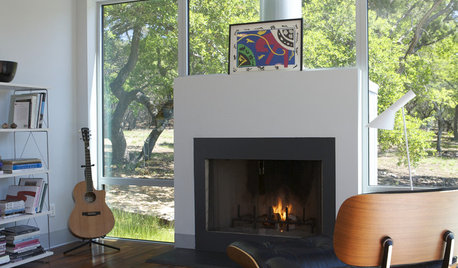

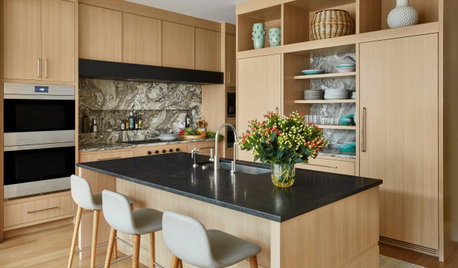
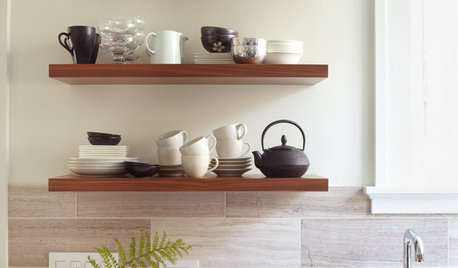
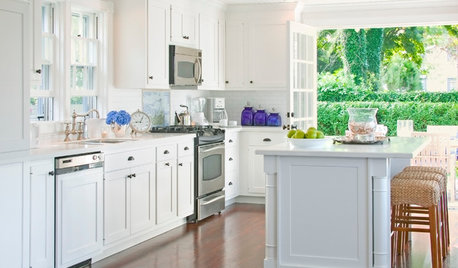
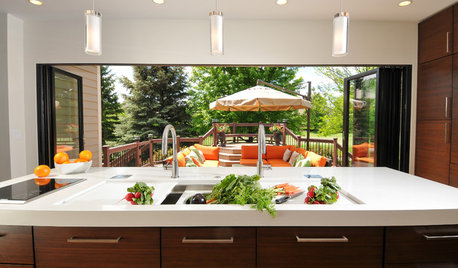


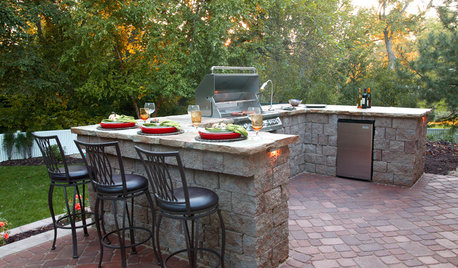








deeageaux